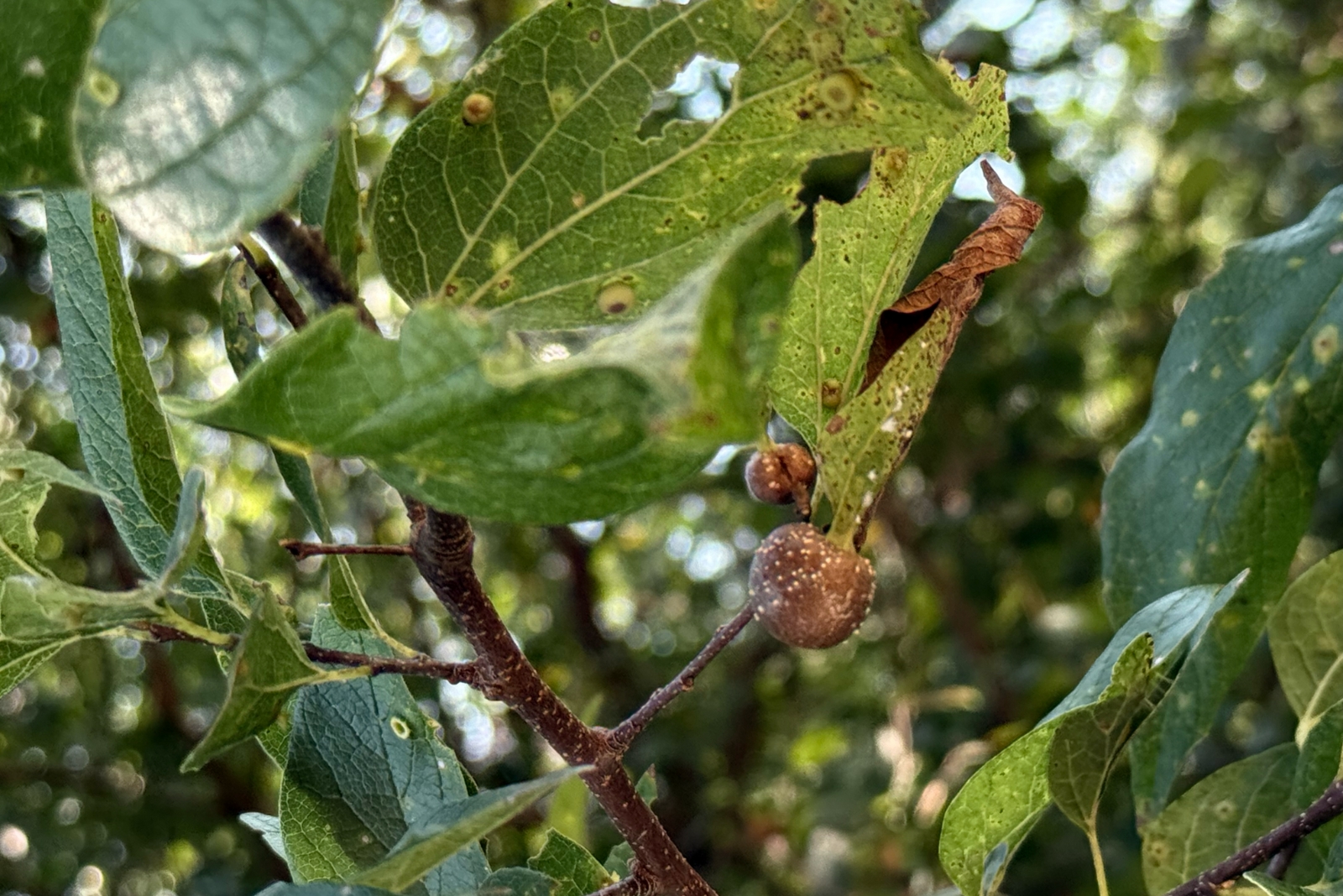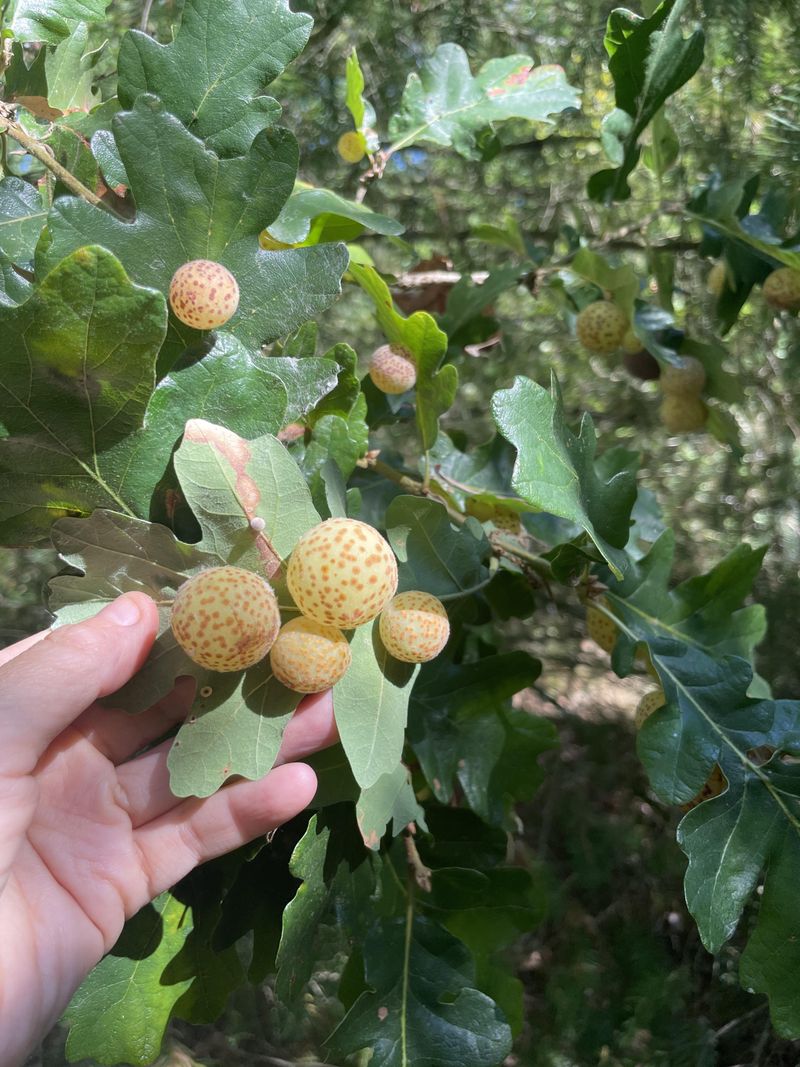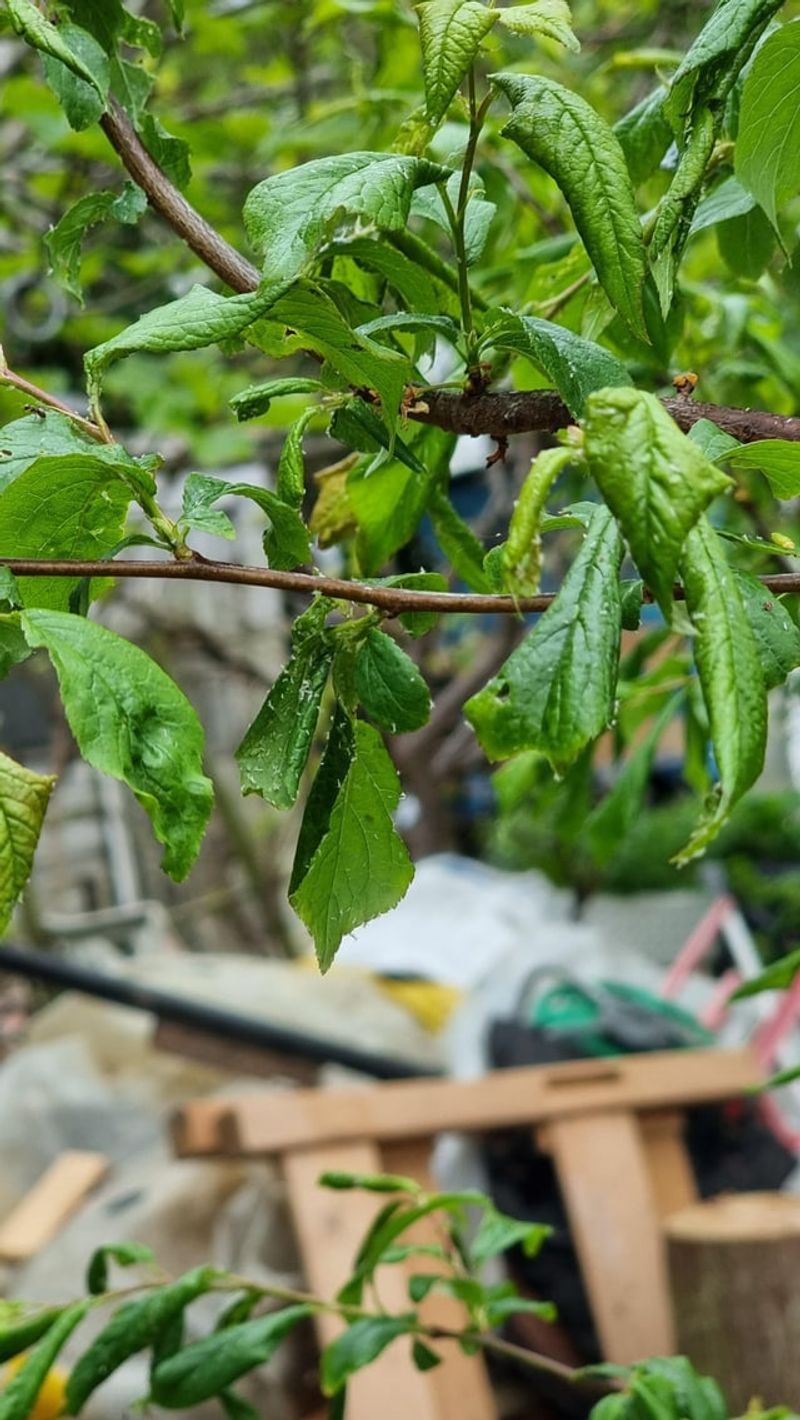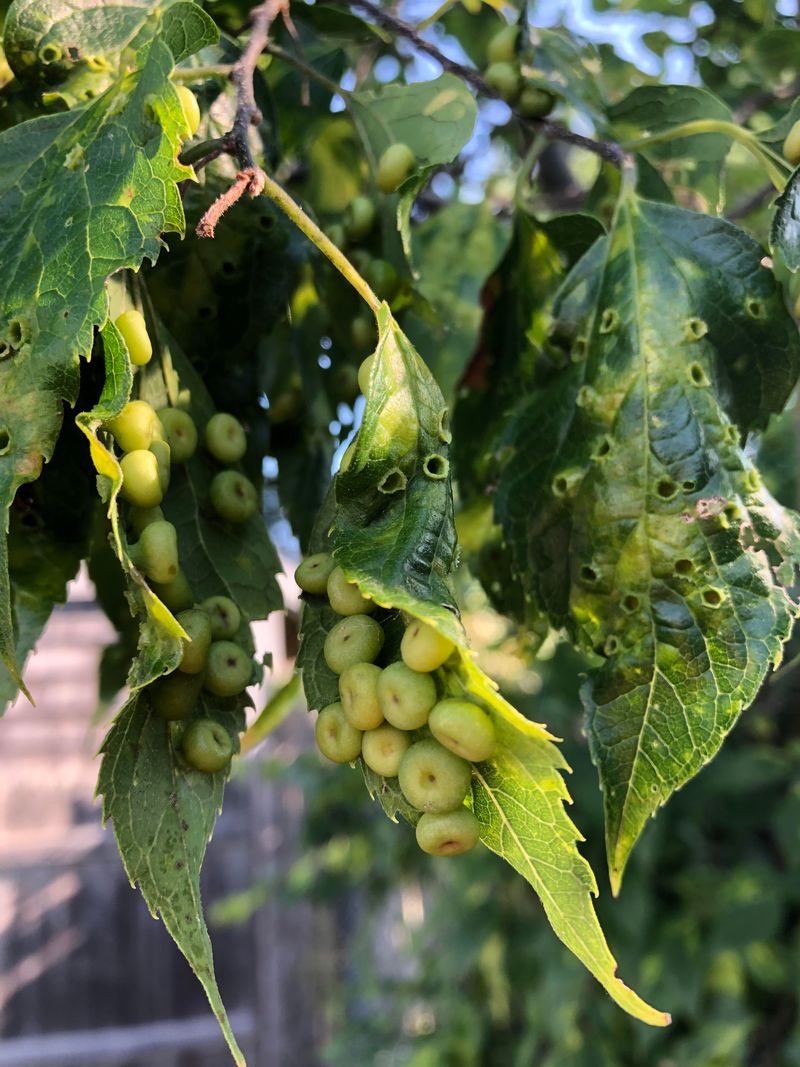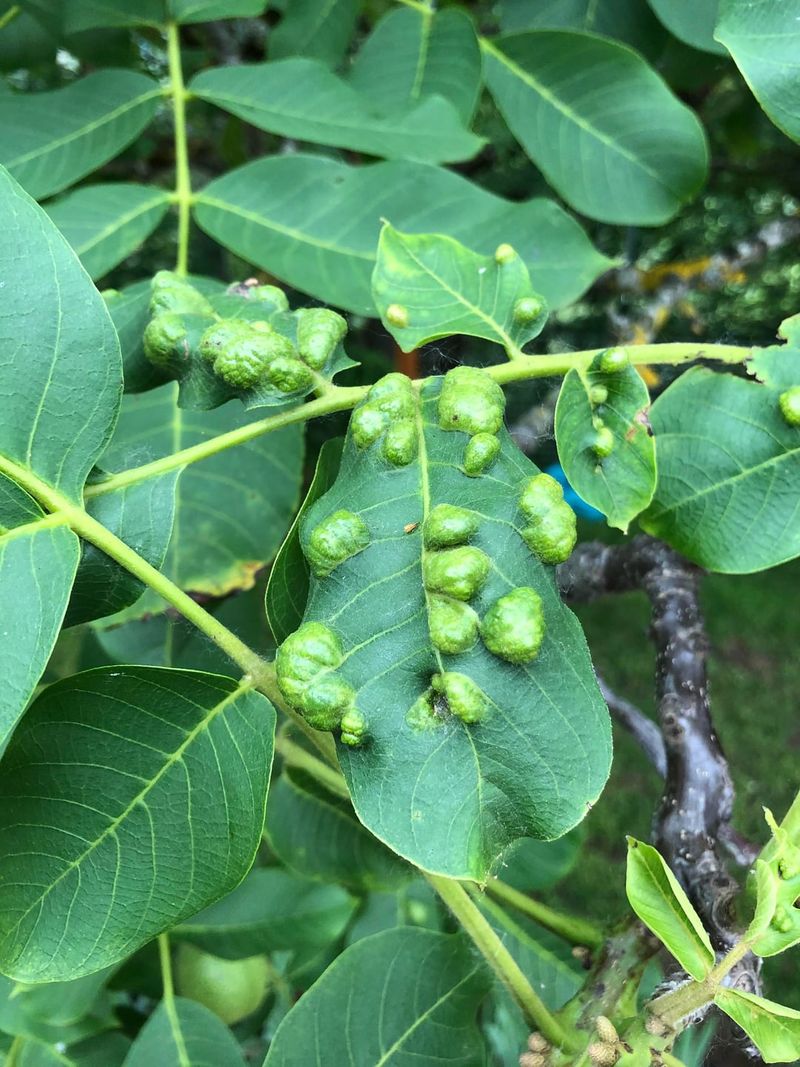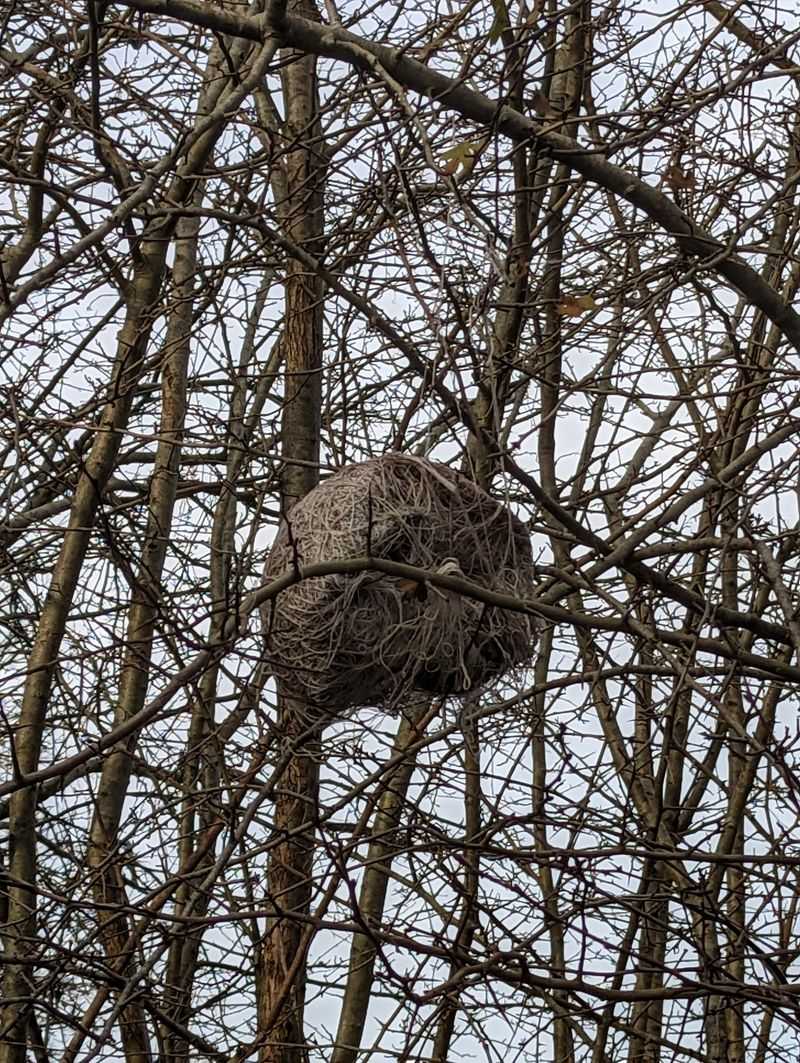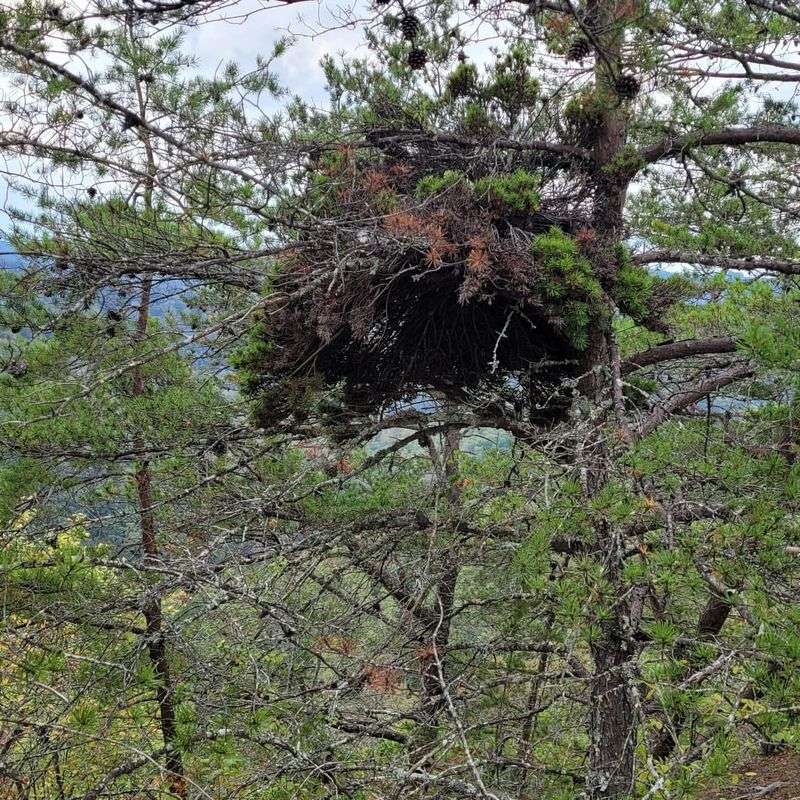The first time I spotted those strange leaf balls in an Arkansas tree, I actually squinted at them trying to convince myself they were nests. But they never looked quite right, and that little mystery drove me wild.
It turns out there’s a whole explanation hiding behind that leafy bundle. Once you know what’s going on, you’ll never look at them the same way again.
1. Gall Wasps Create Protective Homes
Tiny gall wasps lay eggs inside tree buds, and the tree reacts by growing extra tissue around them. The result? Round, leafy balls that protect the developing wasp larvae inside.
Oak trees across Arkansas commonly develop these galls during spring and summer. The wasps don’t actually harm the tree much, even though the galls look alarming.
Next time you see one, remember it’s basically a nursery built by both insect and tree working together in a strange partnership.
2. Aphids Trigger Leaf Curling Responses
When aphids feed on young leaves, their saliva contains chemicals that make leaves curl and bunch up unnaturally. What starts as a few curled edges can quickly become a tight ball of twisted foliage.
Arkansas gardeners often spot these on elms and other shade trees during humid months. The aphids hide inside these protective leaf shelters while they feed and reproduce.
Spraying with water or introducing ladybugs can help control the problem before it gets worse.
3. Psyllid Insects Build Compact Shelters
Psyllids are jumping plant lice that cause hackberry trees throughout Arkansas to grow nipple-shaped galls on leaves. Sometimes multiple galls cluster together, creating what looks like a lumpy leaf ball hanging from branches.
Hackberry psyllids are incredibly common across the state but rarely kill healthy trees. The galls might look ugly, but they’re mostly cosmetic issues.
Birds actually benefit from these insects, feeding on the psyllids during migration season across Arkansas woodlands.
4. Mites Cause Abnormal Leaf Growth
Microscopic eriophyid mites inject growth-altering substances into leaf tissue as they feed. Trees respond by producing thick, bunched-up leaves that form protective balls around the mite colonies.
Maples and other hardwoods in Arkansas frequently develop these strange growths during warm, dry springs. The mites themselves are almost invisible without magnification.
Most trees tolerate mite damage just fine, so treatment isn’t usually necessary unless the infestation becomes severe across multiple seasons.
5. Fungal Infections Deform Foliage
Certain fungi attack developing leaves and cause them to grow in twisted, bunched patterns instead of spreading out normally. The infected leaves stay small and cluster together, creating dense balls of deformed foliage.
Peach leaf curl and similar fungal diseases affect various Arkansas trees, especially during wet springs. Humidity and rainfall create perfect conditions for spores to spread.
Fungicides applied before bud break can prevent these infections, but timing is everything for effective treatment in Arkansas gardens.
6. Squirrel Nests That Fool Everyone
Okay, so squirrel dreys are technically nests, but they’re not bird nests! Squirrels weave together leaves and small twigs to create round shelters high in Arkansas trees.
Gray and fox squirrels throughout the state build multiple dreys for different purposes—sleeping, raising babies, or escaping predators. From below, they look remarkably like mysterious leaf balls.
Watch the nest for a while, and you might spot a bushy tail poking out, revealing the true architect behind the construction.
7. Witches’ Broom Disease Creates Clusters
Witches’ broom is a bizarre condition where trees grow dense clusters of branches and leaves in tight, tangled bunches. The result looks like someone tied a bunch of twigs and leaves into a messy ball.
Various fungi, viruses, and even mites can trigger this abnormal growth pattern in Arkansas forests. Hackberries and other native species commonly display these strange formations.
While they look concerning, most witches’ broom clusters don’t seriously threaten the overall health of mature trees growing across Arkansas landscapes.

